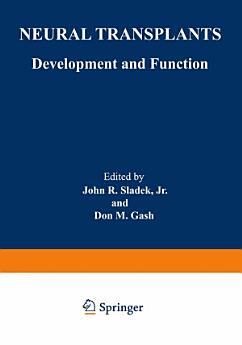Neural Transplants: Development and Function
John R. Sladek
พ.ย. 2013 · Springer Science & Business Media
eBook
454
หน้า
reportคะแนนและรีวิวไม่ได้รับการตรวจสอบยืนยัน ดูข้อมูลเพิ่มเติม
เกี่ยวกับ eBook เล่มนี้
The story of mammalian neural transplantation really begins eighty-one years ago. In Chicago in December of 1903, a 34-year-old physician, Elizabeth Hopkins Dunn, working as a research assistant in neurology, initiated a series of experiments to examine the ability of neonatal rat cerebral tissue to survive transplantation into the brain of matched littermates. Out of 46 attempts, four clearly successful grafts were identified. The publication of Dunn's results in 1917, the first credible report to demonstrate the feasibility of mammalian CNS transplants, generated little interest. In fact, the next significant experiment in this field did not appear until 1930. The field continued to grow slowly and quietly as investigators gradually realized the value of neural trans plantation to study problems of development and plasticity in the mammalian nervous system. With the discovery in 1979 that grafted neurons were capable of appropriate and functional interactions with the host brain, interest in neural transplantation esca lated sharply. The extraordinary opportunities created by using functional neural trans plants in investigating basic issues in neurobiology, as well as the clinical implications, excited both scientists and the public. The popularity of neural transplantation has been growing rapidly in the past five years and shows no signs of abating. The present volume was designed to meet two needs created by the rapid growth of this subdiscipline of neurobiology. The first was to provide a thorough review of the experimental foundations of neural transplantation.
ให้คะแนน eBook นี้
แสดงความเห็นของคุณให้เรารับรู้
ข้อมูลในการอ่าน
สมาร์ทโฟนและแท็บเล็ต
ติดตั้งแอป Google Play Books สำหรับ Android และ iPad/iPhone แอปจะซิงค์โดยอัตโนมัติกับบัญชีของคุณ และช่วยให้คุณอ่านแบบออนไลน์หรือออฟไลน์ได้ทุกที่
แล็ปท็อปและคอมพิวเตอร์
คุณฟังหนังสือเสียงที่ซื้อจาก Google Play โดยใช้เว็บเบราว์เซอร์ในคอมพิวเตอร์ได้
eReader และอุปกรณ์อื่นๆ
หากต้องการอ่านบนอุปกรณ์ e-ink เช่น Kobo eReader คุณจะต้องดาวน์โหลดและโอนไฟล์ไปยังอุปกรณ์ของคุณ โปรดทำตามวิธีการอย่างละเอียดในศูนย์ช่วยเหลือเพื่อโอนไฟล์ไปยัง eReader ที่รองรับ




